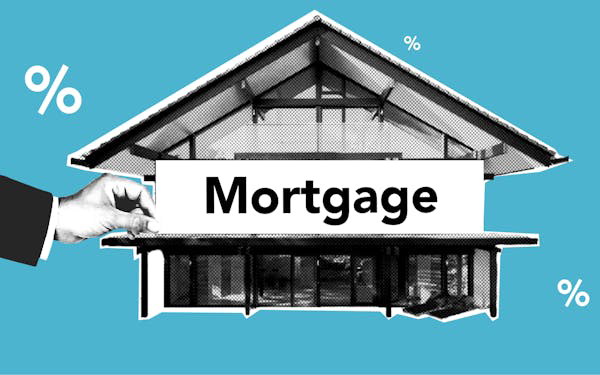Renovation Loans

Renovation Loans: Finance Your Home Makeover
An astonishing 58% of American homeowners are set to enhance their nests by diving into renovation projects this year. With surging aspirations to upgrade living spaces, the journey to a dream home is often gated by the looming question of affordability. Enter the realm of renovation loans, a financial bridge that transforms home improvement fantasies into concrete realities. Combining the nuanced worlds of personal finance and property enhancement, these loans unfold a spectrum of remodel financing options to buttress your home’s metamorphosis.
The essence of smart financing lies in tailoring the approach to the homeowner’s unique financial landscape—leveraging the accumulated equity with a home renovation mortgage, or choosing other avenues like unsecured personal loans. Whether pooling from built-up property wealth or exploring other renovation funding avenues, citizens across the United States can access an array of solutions tailored to the magnitude of their renovation projects and the intricacies of their financial standings.
Key Takeaways
- Renovation loans are vital for homeowners seeking to fund their home remodels, blending a variety of home improvement financing methods.
- Equity-based solutions like HELOCs and home equity loans draw on the home’s value, while personal loans offer alternative renovation funding pathways.
- Decision-making hinges on weighing factors such as financial circumstances, project scale, renovation loan interest rates, and repayment preferences.
- Understanding the different types of remodel financing options, including secured and unsecured loans, is crucial for a well-informed choice.
- A home renovation mortgage can align with long-term financial goals, providing structured funding for substantial home improvements.
Understanding Home Equity Financing for Renovations
For homeowners considering a makeover for their property, understanding the mechanisms behind home equity financing can open doors to compelling renovation financing solutions.
A blend of home equity loan for renovations and other remodel loan options pave the way for achieving dream home improvements.
What is Home Equity?
Simply put, home equity is the value of a homeowner’s interest in their property, calculated by the difference between the home’s market value and the outstanding balance of all liens on the property. This equity is a cornerstone for obtaining a construction loan for renovations, allowing homeowners to tap into a funding reservoir for their renovation plans.
Advantages of Home Equity Loans and HELOCs
Home renovation financing takes a favorable turn with home equity loans, granting homeowners the ability to secure lower interest rates. Features such as fixed interest rates and the potential for tax-deductible interests make home equity loans reliable renovation financing solutions. Conversely, Home Equity Lines of Credit (HELOCs) offer a reusable credit line, perfect for ongoing projects requiring flexible funding.


Comparing HELOCs and Home Equity Loans
Choosing between a HELOC and a home equity loan often hinges on the specifics of the renovation project and the homeowner’s financial strategy. To elucidate the distinction and aid in decision-making, consider the following comparative table:
| Feature | Home Equity Loan | HELOC |
|---|---|---|
| Interest Rate Type | Fixed | Variable |
| Funding Type | Lump-sum | Revolving credit line |
| Repayment Structure | Regular, consistent payments | Flexible during draw period |
| Usage | Ideal for pre-planned renovations with a fixed budget | Better suited for projects with fluctuating costs |
| Property Risk | Collateral can be foreclosed if payments lapse | Same as home equity loan |
Whether it’s a fixed lump-sum through a home equity loan or a flexible line of credit via a HELOC, both financing options provide homeowners with solid foundation to fund their home upgrades. Thus, when considering home renovation financing, it’s paramount to weigh these facets in line with the renovation’s scope and one’s financial steadiness.
Exploring Non-Equity Renovation Financing Solutions
While homeowners frequently tap into their home equity for renovation funding, non-equity financial products, such as home improvement loans and remodeling loans, present beneficial alternatives. These renovation financing options can be instrumental for property owners looking to enhance their living space without utilizing the value of their homes as collateral.
When to Consider Personal Loans for Renovation
Personal loans for house remodeling financing have risen in popularity due to their rapid funding time and absence of collateral requirements. Ideal for homeowners who have not built up enough equity or who prefer not to use their home as security, personal loans offer a streamlined application process and faster access to funds. However, it is crucial to weigh the higher interest rates against the expediency and shorter repayment terms they provide, which can span up to 12 years.
Strategies for Using Credit Cards Responsibly during Renovations
For more modest renovations, credit cards can serve as a convenient source of renovation financing options. Employed wisely, credit cards allow homeowners to take advantage of rewards and possible introductory rates. Yet, the key to using credit cards for property renovation funding lies in strategic planning to avoid accruing high-interest debt. Prompt payments and using cards with the best terms for home expenses mitigate financial strain while benefiting from the flexibility credit cards offer.

Renovation Loans
For homeowners looking to transform their abode, understanding the nuances of renovation loan rates and the mortgage programs available can make a significant financial difference. These rates and programs not only influence the immediate project costs but also the long-term investment in one’s home.
Renovation Loan Rates and How They Affect Your Project Costs
Renovation loan rates are a critical component in calculating the total cost of a home renovation project. Lower interest rates can make large-scale improvements significantly more manageable by reducing the overall interest paid over the life of the loan. It is essential for borrowers to research and secure the most favorable rates to ensure that their renovation projects don’t become a financial burden.
Examining Popular Renovation Loan Programs: FHA 203(k) and Fannie Mae HomeStyle
Two popular home renovation mortgage programs are the FHA 203k loan and the Fannie Mae HomeStyle loan. Both programs have unique features tailored for homeowners planning renovations and repairs, setting the stage for transformative upgrades that may otherwise be out of reach financially.
| FHA 203(k) Loan | Fannie Mae HomeStyle Loan |
|---|---|
| Designed for primary residences | Flexible - can be used for second homes and investment properties |
| Loan amount depends on home value after improvements | Loan amount is based on the post-renovation property appraisal |
| Requires a minimum of $5,000 in renovations | Can finance smaller projects with no minimum renovation cost |
| Involves stricter property and borrower qualifications | Offers more lenient qualification guidelines |
| Potential for lower down payment | Typically requires a higher down payment |
| Mortgage insurance required for loans over 80% of home value | TNo mortgage insurance for loans below 80% of the home value |
By comparing the FHA 203(k) and the Fannie Mae HomeStyle loans, homeowners can gain a comprehensive view of how these home renovation mortgage programs may suit their financial situation and renovation goals. Navigating these loan options with an understanding of their intricacies can lead to a more successful and financially sound renovation project.
Navigating Government-Backed Renovation Loan Options
For many American homeowners, the journey to a dream home is intertwined with the quest for viable renovation financing solutions. Government-backed loan programs are specifically designed to accommodate the unique needs of certain groups, such as veterans and first-time homebuyers, offering more than just funding — they promise a segue into a life in a home tailored to their evolving needs.
VA Renovation Loans for Veterans and Service Members
The VA renovation loan stands as a beacon of opportunity for veterans and service members to finance their home renovations. Integral to these mortgage options is the flexibility to cover not only the purchase price of a home but also the costs associated with its necessary improvements. Rooted in a commitment to support those who have served, VA renovation loans empower these individuals to nurture and invest in a living space without the weight of excessive financial burden.
How FHA 203(k) Loans Work for First-Time Homebuyers
The FHA 203(k) loan caters to first-time homebuyers yearning to lay down roots in a place they can call their own. A beacon for aspiring homeowners, this loan amalgamates renovation costs with the traditional mortgage, allowing borrowers to finance their home improvement projects by anticipating the future, post-improvement value of their property. Such renovation mortgages introduce an avenue for those embarking on homeownership, enveloped by the security of government assurance, to create their envisioned abode with sustainable financial backing.
Insightful exploration into government-backed renovation financing solutions reveals a marketplace ripe with opportunity. The prospects va renovation loans and fha 203(k) loans offer resonate with the desire for not only stable shelter but a personalized sanctuary — fortifying the American dream with the nails and beams of affordable, attainable home improvements.
Calculating the Total Cost of Your Home Renovation
Embarking on a home renovation project involves more than just aesthetic choices and material selections; it's equally crucial to comprehend the financial implications. The overall cost of home improvement can be significant, and homeowners are advised to approach budgeting and financing with diligence, informed by specific home improvement statistics, kitchen and bathroom remodel costs, and the expenses related to updates on home systems.
Factors Influencing the Costs of Home Improvement Projects
The cost of home improvement projects varies widely based on several components. Notably, the scope of your renovation – be it a minor upgrade to a single room or a comprehensive overhaul of your entire residence – sets the foundation for your projected expenses. Material costs, from budget-friendly options to luxury finishes, will sway your bottom line, compounded by labor costs influenced by the expertise required and prevailing market rates. Additionally, the geographical location of your property can either impose a premium or offer savings in procurement and labor pricing.
- Down payment assistance Scope of renovation – minor updates vs. full-scale remodeling
- Material costs – from standard to premium selections
- Labor expenses – rates of skilled laborers and contractors
- First-time homebuyer grants Local market conditions – regional price variations for materials and labor
Estimating Your Renovation Budget and Loan Size
Intelligent budgeting for a renovation begins with a clear-eyed assessment of all potential costs, leading homeowners to a well-founded estimate. Consideration for kitchen remodels and bathroom remodels, often among the most resource-intensive modifications, should anticipate variations in appliance features and plumbing requirements. Similarly, investments in home system upgrades such as heating, ventilation, and air conditioning (HVAC) or smart home technology can fluctuate widely.
| Renovation Area | Typical Cost Range | Expected ROI |
|---|---|---|
| Kitchen Remodel | $13,000 - $37,000 | 60% - 80% |
| Bathroom Remodel | $6,000 - $15,000 | 50% - 70% |
| Home System Upgrades | $4,000 - $15,000 | Dependent on individual system |
After establishing the renovation budget absorbing all probable costs and overages, homeowners need to strategically navigate the loan landscape. A key factor is the loan-to-value ratio offered by lenders and the homeowner’s capacity to repay the loan without overburdening their finances. It’s a delicate balance to maintain – borrowing enough to cover renovation ambitions while not exceeding prudent financial thresholds.
- Formulate a comprehensive renovation budget including overages
- Analyze loan-to-value ratio and interest rates to determine the loan size
- Align the loan amount with income levels to ensure affordability
In conclusion, meticulous planning and considered estimations underpin the successful financing of a home renovation, setting a course for a project that not only transforms living spaces but also secures sound investment in one’s home.
Conclusion
Renovation loans stand out as a robust financial instrument that empower homeowners to transform their spaces with a home makeover that reflects personal taste and modern functionality. These tools, ranging from the secure foundation of equity-based home improvement financing solutions like **HELOCs** and home equity loans to the nimble and accessible non-equity alternatives such as personal loans and credit cards, serve different needs and financial contexts. Reflecting on the variety of remodel financing options available ensures that homeowners make informed, strategic decisions tailored to their unique situations.
For individuals who have served in the military or those stepping into homeownership for the first time, government-backed avenues such as VA renovation loans and the FHA 203(k) loan are especially noteworthy. These programs not only assist with the acquisition of a home but also facilitate the integration of improvement costs into a singular, manageable **construction loan for renovations**. The support of these federal programs underscores the nation’s commitment to accessible and sustainable housing.
Ultimately, the success of financing a home renovation venture hinges on meticulous planning and precise budgeting. Homeowners must calculate the total costs of renovations while prioritizing the impact on both property valuation and quality of life. An astute approach to renovation budgeting—considering not just the immediate expenses but also the long-term value it adds—ensures that renovations are a wise investment for the future. Therefore, as homeowners consider their array of **remodel financing options**, they should do so with a clear vision and an understanding that a well-executed home improvement project can offer immeasurable benefits both in the present and the years to follow.
FAQ
Renovation loans are financial tools that homeowners can use to finance home improvements and remodels. These loans can either leverage the equity in a property or be offered as unsecured personal loans, with options like Home Equity Lines of Credit (HELOCs) and home equity loans, or personal loans and credit cards for those without substantial equity.
Home equity is the portion of the property's value that the homeowner actually owns. It is the difference between the home's current market value and the outstanding balance of all liens on the property. This equity can serve as collateral for loans, often resulting in lower interest rates and potential tax benefits.
Home equity loans and HELOCs offer lower interest rates because they are secured by the homeowner's property. The interest paid on these loan types is potentially tax-deductible, and they generally provide larger loan amounts compared to unsecured loans, depending on the available equity.
HELOCs offer a flexible line of credit with a draw period where the borrower can withdraw funds as needed, which is ideal for ongoing renovation projects with fluctuating costs. Home equity loans provide a lump sum upfront, which works well for homeowners with a set renovation budget. Repayment terms and interest rates vary between the two options.
Personal loans for renovation should be considered when a homeowner requires immediate funding or lacks sufficient home equity. They offer quick disbursement of funds and do not put the home at risk as collateral. However, they often come with higher interest rates and shorter repayment terms compared to home equity-based options.
Credit cards can be used for smaller renovation expenses or for earning rewards on purchases. To use them responsibly, homeowners should aim to pay the balance off quickly to avoid high-interest charges, and they may consider using cards with 0% introductory APR offers for funding smaller projects.
Renovation loan rates directly influence the total cost of financing a home improvement project. Lower interest rates reduce the overall amount of interest paid over the life of the loan, making the renovation more affordable. It is important to compare rates from different lenders and loan programs to find the most cost-effective option.
The FHA 203(k) and Fannie Mae HomeStyle loans are renovation loan programs that allow borrowers to roll the cost of home improvements into their mortgage. The FHA 203(k) is tailored for primary residences and offers a streamlined option for minor renovations, while the Fannie Mae HomeStyle can be used for any type of renovation and is based on the home’s anticipated value after improvements.
VA renovation loans are a government-backed financing option available to veterans and service members. They allow for the financing of both the purchase of a home and the cost of its improvements in a single loan, with the benefits of a VA loan, such as no down payment and no mortgage insurance requirements.
FHA 203(k) loans are particularly appealing for first-time homebuyers because they can combine the cost of purchasing a home with the expenses of renovation into a single mortgage. This program also requires a lower down payment compared to traditional mortgages and is more lenient on credit requirements.
The costs of home improvement projects are influenced by the scope of the project, the quality of materials chosen, labor costs, and the local market conditions. Specific project types, like kitchen and bathroom remodels, can also significantly affect the total cost due to the complexity and materials involved.
A homeowner can estimate their renovation budget and loan size by thoroughly assessing all aspects of their project, including materials, labor, permits, and any other associated expenses. It is important to add a contingency for unexpected costs. Once they have an estimated budget, they can determine the loan size by considering their ability to repay, the home's after-renovation value, and the loan-to-value ratio required by lenders.
